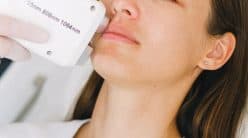If you’re a migraine sufferer, you know how debilitating it can be. But you may be able to manage your pain without medication.
Keep a headache diary to identify your triggers, which could include foods like chocolate and dairy, light, noise, or strong odors. Avoiding these triggers can decrease the frequency of your headaches.
1. Exercise
Migraine is a type of headache that causes throbbing or pounding pain. It often affects one side of the head, and may also cause nausea or vomiting. Migraine can be so severe that it can lead to missed work or other activities.
Exercise can help reduce stress, which is a common trigger for migraines. It can also promote healthy sleep, which is important for managing migraines. However, it’s important to talk to your doctor before starting an exercise routine because not everyone can safely do all forms of exercise.
For example, some people find that certain types of exercise, such as powerlifting or power lifting, can trigger a migraine. This is because these workouts can increase the pressure on nerves in your neck and scalp, which can lead to a headache.
It’s also important to drink plenty of water before, during, and after exercise. Dehydration is another common trigger for migraines, and drinking water can help prevent them. You can also try drinking herbal tea, which can be a great way to get your water while getting other health benefits.
2. Try Acupressure
There are a number of home remedies that can provide additional migraine pain relief and help prevent attacks. These include dietary changes, headache hats, essential oils, acupressure, and more.
Acupressure involves placing pressure on specific points on the body that are believed to help balance the flow of energy, or “chi,” throughout the body. In addition, acupuncture is believed to relieve migraine headaches by stimulating certain nerves and changing brain chemicals that control pain. Acupuncture can be done by a trained professional or at home with the help of an acupressure kit.
Getting plenty of sleep, eating healthy foods and exercising regularly are also great ways to prevent migraines. Practicing relaxation techniques can be helpful, too, because stress often triggers migraines. This can include yoga, tai chi, meditation, breathing exercises, and prayer. Dimming the lights in your living space and office can also be helpful, since sensitivity to light (also known as photophobia) is another common migraine symptom. It is important to talk with your doctor before trying any of these treatments. They can help you create a holistic treatment plan that best meets your needs.
3. Try Scalp Massage
Whether it’s from a professional or using an at-home scalp massage tool, this natural remedy for migraines and headaches increases blood flow while reducing tension. In fact, a recent study found that scalp massage significantly reduced both heart rate and blood pressure in participants.
When performed by someone else, such as a friend or partner, scalp massage boosts the body’s feel-good hormones, serotonin and dopamine. In addition, the stress hormone cortisol is lowered.
Some migraine patients experience sensitivity to light (known as photophobia). By keeping the lights in your home or workplace low, you can help ease this common symptom.
Try adding ginger to your diet, as it can reduce nausea that may accompany migraine attacks or side effects of medication. Many people find relief from consuming ginger tea, taking a ginger supplement or eating ginger candies.
4. Get Plenty of Sleep
Getting plenty of sleep can help prevent migraine headaches and ease symptoms during an attack. Managing sleep patterns with consistency can also help. Try keeping a regular schedule, storing electronics outside of the bedroom and using a wind-down routine before bed. Exercise may also help, but consult your doctor before starting a new exercise regimen.
It’s important to find what triggers your migraines, so keep a diary to see when your attacks occur, how long they last and what relieves them. You may also want to try keeping a food journal, since certain foods and drinks have been linked to migraine headaches, including aged cheeses, chocolate, alcohol and caffeine.
Migraine treatment includes pain-relieving medications, which can stop an attack once it starts, and preventive medication that you take daily to reduce how often and how severe your migraines are. In addition, some people use devices that apply magnetic or electrical energy to nerves in the head to treat or prevent migraines. These are called neuromodulation treatments and may be used with or without medications.

5. Drink Plenty of Water
While there is no cure for migraine, home remedies and lifestyle changes can help reduce the frequency of attacks. Some home remedies, like dimming the lights, have been shown to help with a common symptom of migraines, photophobia (sensitivity to light).
Another way to manage a headache is by drinking plenty of water. Dehydration can trigger migraines, so keeping a bottle of water at all times is important. Other hydration strategies include eating foods that are rich in water, such as fruits and vegetables.
A food journal can also help pinpoint which foods trigger your migraines. Some common triggers include aged cheese, chocolate, caffeine and nitrates found in processed meats like hot dogs, bacon, lunch meat and pepperoni, according to the Cleveland Clinic.
Other common triggers include changes in the weather, odors, stress, fatigue, sleep disturbances, and hormonal fluctuations (in women). Opioids are strong pain-killers that may also help, but they can have dangerous side effects. A medication called CGRP inhibitors, such as zavzpret, can block the protein that is involved in the transmission of pain signals during a migraine.
6. Take a Caffeine Supplement
A little caffeine can help soothe a migraine headache once it starts. The caffeine in coffee, tea and soda can narrow blood vessels that are widening to cause pain. It also can make certain pain relief medications more effective, according to the National Headache Foundation. Just be careful, because too much caffeine can trigger a rebound headache once its effects wear off. You should also avoid caffeine before bed because it can interfere with sleep.
Vitamin D may reduce the frequency of migraine attacks, a study published in 2018 found. You can get this nutrient from foods like dairy and eggs, or by spending time in the sun.
Feverfew and butterbur supplements are sometimes used to prevent migraines, but they have mixed results in research. In addition, some people have liver toxicity issues with feverfew, so consult your doctor before trying it. Other natural remedies for migraine prevention include magnesium (found in leafy greens and nuts) and riboflavin, which is found in foods such as eggs and fortified cereals. You can also try consuming ginger, which is known to help soothe nausea.
7. Try Temperature Therapy
A hot or cold therapy treatment may help reduce the intensity of a migraine. This is because the cold causes blood vessels to constrict, and it provides numbing sensations in the head. Some people swear by ice baths, while others find relief from using a hot or warm compress on their neck or forehead.
Keep in mind, however, that the heat therapy can increase your risk of burns if you apply it to your skin for too long or use it in combination with another hot-and-cold treatment at once. It’s also important to avoid direct contact with a heating pad for too long and never fall asleep with it on your head.
Keeping your environment cool and eliminating extra stimulation can also help you prevent migraines. For example, if your migraines are triggered by loud music or bright lights, try listening to soft, soothing music or taking a walk in a darkened room to ease your symptoms. You can also try a relaxing bath or adding essential oils to your shower, as some people say these scents can reduce stress and tension.
8. Find a Migraine Medicine That Works For You
There is no migraine cure, but there are medications that can help prevent and relieve your symptoms. These include OTC pain relievers like aspirin and ibuprofen, and prescription drugs called triptans. These work by blocking the triggering mechanism that causes headaches and stopping them at their source. There are seven triptan medications on the market: almotriptan (Axert), eletriptan (Relpax), frovatriptan (Frova), naratriptan (Amerge), rizatriptan (Maxalt), sumatriptan (Imitrex), and zolmitriptan (Zomig).
Many people also use supplements like magnesium or riboflavin to help with migraines. You can find these in many foods including leafy greens, nuts, eggs, and fortified cereals. You can also get them as migraine-fighting supplements like Cove’s Oasis, Super B, or a combination pill called Beam.
Some people also find relief by using heat or cold on their heads and necks. Applying ice to the outside of your head and neck can help ease headache pain, while a heating pad or applying a warm cloth to the forehead and temples can relax muscles and reduce tension. Also try avoiding any triggers that you know of, such as loud or repetitive noises, certain foods and beverages, and osmophobia (a sensitivity to strong smells). Taking a migraine diary can help you identify the specific things that seem to cause or make your headaches worse.






